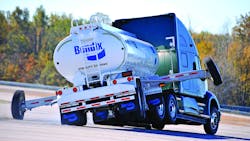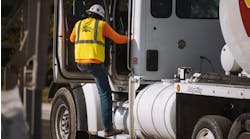The work of manufacturers of safety technologies is never done. They are continuously striving to improve the capabilities of their systems, aimed at making the act of driving safer and easier. What has changed of late is pace of adoption by fleets across the trucking industry.
"Ten years ago, there was a lot more convincing we had to do," said Jon Morrison, WABCO's president of the Americas. "The return on investment is clear."
In fact, the safety and financial benefits have been so clear, truck makers are beginning to offer certain safety technologies as standard equipment. This illustrates fleets are not only recognizing the true value of the technologies, but also are demanding it on their new vehicles, said Fred Andersky, director of customer solutions and controls for Bendix Commercial Vehicle Systems.
WABCO and Bendix are the main suppliers of active safety systems in North America, along with Detroit, a unit of Daimler Trucks North America. Other companies, including ZF and Bosch, seem poised to try to take a piece of this space as the evolution of automated driving and popularity of these safety systems grows.
"The majority of customers are upgrading to premium systems," said Jim Nachtman, on-highway heavy marketing director for Navistar. "The ability to mitigate even a single incident can offer enough savings to install collision mitigation on a very large number of new vehicles."
A similar story is playing out at other truck manufacturers, which all offer a variety of safety packages, often blending suppliers' systems with its own proprietary technology, developed in conjunction with Bendix or WABCO. These safety products include lane departure warning systems, stability control, automatic emergency braking, blind spot assistance, on-board video, and other related systems.
These technologies have now been around long enough that "fleets are able to do their own research to see the benefits," said David Smith, who in June was named manager of DTNA's automated truck research and development center. Speaking at the Technology & Maintenance Council's annual meeting recently, he said the return on investment is particularly clear for larger fleets that run millions of highway miles annually.
Adoption is further accelerating as smaller fleets begin taking ownership of used vehicles on the secondary market with older generations of active safety technologies, Smith said. He also pointed out people are getting more familiar with these technologies in their everyday lives, whether in the personal vehicles they own or even through television advertisements.
The safety benefits are also becoming easier to quantify. Last year, a study from the AAA Foundation for Traffic Safety stated that equipping all heavy duty trucks with various active safety technologies could prevent up to 63,000 crashes annually.
"It's understandable that many motorists are fearful and feel vulnerable when traveling near large trucks," said Jake Nelson, AAA director of Traffic Safety Advocacy and Research. "Adding these safety technologies to the trucking fleet is not only cost-effective, but doing so helps to alleviate driver concerns, and prevents crashes. In the long run, it's a win-win for industry and drivers nationwide."
Along with the proliferation of air disc brakes, these technologies are meant to complement the more traditional safety equipment. In the very near future, safety technologies should incorporate a greater use of active-steering and lane-centering assistance, expected to only further enhance highway safety.




